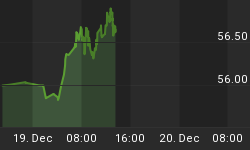For some people, sustainable or green investing is little more than the latest fad to hit the investing universe. Yet for others, failing to up your ante in the business of creating a healthier, non-toxic environment can become a deal breaker. Italy’s central bank, the Bank of Italy, belongs to the latter category.
The bank plans to adopt an investment criteria that will reward companies for taking action on climate change across its portfolio of $8 billion in shareholdings beginning end-June, and then later it will extend the program to a billion euros in corporate bond holdings.
The bank is a member of the Network for Greening the Financial System, a global organization that views climate change as a major challenge to financial stability.
The Bank of Italy has ambitious targets for companies in its portfolio to lower greenhouse gas emissions by 23 percent while trimming water and energy consumption by 17 percent and 30 percent, respectively. The criteria will exclude firms that fail to adopt U.N. principles on human rights, labor, the environment, and anti-corruption.
Sustainable investing comes of age
Italy’s central bank has become the latest company to employ a system that rewards firms that are doing something about climate change in a bid to ratchet up pressure on boardrooms to go green, joining a slew of other central banks, commercial banks and fund managers.
The European Central Bank (ECB) is among the largest green investors. In a speech last year, Benoît Cœuré, member of the ECB’s executive board, revealed that the bank owned about a quarter of green public bonds which totaled €48bn and a quarter of green corporate bonds. These holdings mirror the banks ownership across bonds markets estimated at €2.5tn. The bank says it followed principles of market neutrality when purchasing the bonds meaning they were not bought with the express intention to boost the green financial market--though of course, they did have that effect.
Related: Is Winter Coming For HBO?
While green investing helps champion the noble goal of ameliorating climate change, it can be a money-spinner, too. During his illustrious career, Al Gore has worn many caps: Clinton’s sidekick, American vice-president, documentary film producer, and a vocal environmental activist. But now he sports a new one: boundary-busting gree investor. 15 years ago, Mr. Gore teamed up with Goldman Sachs’ alumnus, David Blood, to create a London-based green investment fund known simply as Generation. Although Gore remains the firm’s titular head, the fund is actually run by conventional asset managers. The generation has managed to rack up annualized returns in the low teens net of fees, easily besting most fund managers and quietly amassing nearly $20 billion in assets.
That’s quite startling because when the green movement first emerged years ago, it was simply associated with a warm moral glow but not-so-good returns. A 2012 study of 131 green mutual funds by academics at Missouri University concluded that they underperformed traditional funds on a risk-adjusted basis. Meanwhile, green bonds, erstwhile beloved for their double-digit yields due to their perception as being wildly risky, are falling out of favor. These vintage bonds have seen their yields drop over the years culminating in the shuttering of French investment group, Finance Corporation, and Amundi, a $2-billion green-bond fund and the largest in its class last year.
Nevertheless, the performance of green mutual funds has been steadily improving and many now are able to generate decent returns. In fact, there’s now a class of green investments that are expected to produce commercially acceptable returns as the criteria of what qualifies as a green investment has become a lot more variable over the years than simply solar panels and renewable energy.
By Alex Kimani for SafeHaven.com
More Top Reads From Safehaven.com
















